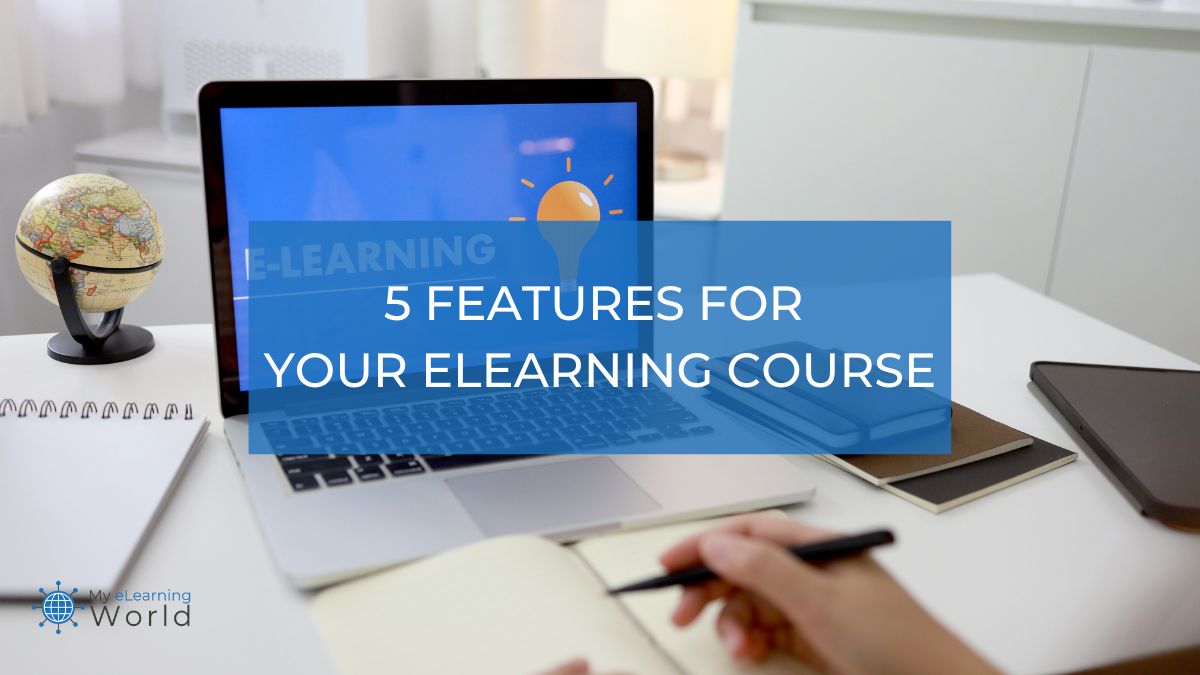With nearly two decades of experience as an instructional designer, I’ve learned that there’s no universal formula for creating effective eLearning courses. The rapid expansion of technology and the growing expectations for engaging content present a unique set of challenges for us as instructional designers. Balancing deep expertise in our subject areas with the craft of delivering a clear, consistent message is just the beginning. We also need to master the art of structuring courses in a way that not only conveys information succinctly but also resonates with and adds value to our learners.
Over the years, I’ve developed a toolkit of strategies and approaches, yet I’ve found that certain foundational elements are essential in crafting high-quality eLearning content. These elements are the cornerstones of effective eLearning, regardless of the subject matter or audience.
In this article, I’ll share these key fundamentals, drawing from my extensive experience in the field, to guide you in creating successful eLearning courses.
5 Features to Consider When Building an eLearning Course
1. Navigation
Over the years, I’ve come to understand the importance of viewing your course not just as a live instructional tool but also as a valuable reference resource. To achieve this dual purpose, it’s crucial to incorporate user-friendly navigation within your course. This means integrating menus, links, and pathways that allow learners to either follow the course linearly or navigate freely to revisit sections for better comprehension.
When designing your course’s navigation, consider the following key questions to ensure clarity and ease of use:
- Logical Structure: Are the concepts and ideas presented in a logical sequence that facilitates understanding?
- Review Accessibility: Have you provided backlinks or other means for learners to easily review previous content?
- Clarity of Navigation Aids: Are your navigation tools, such as infographics or menus, intuitive and easy to understand?
- Multimedia Accessibility: Have you included captions for all multimedia elements to enhance understanding and accessibility?
- Descriptive Elements: For all non-textual elements, have you provided descriptive text to ensure that all learners, regardless of their learning style or potential disabilities, can access the information?
Remember, the goal is to create a course that is not only informative but also navigable and accessible, allowing learners to engage with the content in the most effective way possible.
2. Multimedia
Every time you ask for instructional design tips on the web, all you hear about video is pure praise. There are so many ways instructional designers can use video effectively.
Indeed, a picture is worth a thousand words, and text-based content is becoming boring. Yet you always need to understand the goals of embedding a video into your course and the expected outcome.
Needless to say, multimedia is a great way to bring home your key points in an engaging manner. Depending on the objectives, you may want to give your material a professional ‘academic’ look and feel, or keep it informal and lively to motivate a younger audience.
For a comprehensive user experience, try a mix of media elements in the right proportion and see how it works for your learners.
Audio narrations can be used as the baseline method of content delivery, or as excerpts and quotations to highlight a specific point. The role of animations is hard to overestimate – it’s one of the best options to illustrate processes and logical sequences in a multitude of educational and business disciplines. Naturally, your course will look lifeless without relevant photos, imagery and diagrams, so make sure you throw a little bit of everything into the mix.
Check a few important things before you publish the course:
- Are all your pictures/videos legally owned?
- Is it still easy to play your content on an average PC/mobile device, given the volume of multimedia content involved?
- Are your multimedia items of good quality? Do they match each other by dimensions and definition?
- Are you sure the audio and video can be managed by the learner, i.e. paused, muted, etc.?
- Can the viewer speed up the video playback if they wish?
3. Interactions
Capture your learners’ attention by introducing interactions. Modern authoring tools provide a plethora of options in this field, including live characters, animations, social elements and even games.
“Live” human characters are just fun. They help to emphasize the key concepts and add a certain undertone to your narrative, based on their personal patterns and voices. Make sure your course goes hand in hand with the latest trends and sync up the material with social networks. Provide links to Facebook, LinkedIn, Twitter, etc. so your content can go viral. Flash animations are easy to implement and extremely efficient – this is true for various ages and learner groups. Unravelling your mysteries in animated form is a witty way for your course to pick up good karma.
Some creators will probably frown at this, but games are also a great eLearning motivator. Hot stuff to include in your training material, games not only entertain but help the students understand key objectives, roles and structures associated with your particular field of studies. I absolutely love gamification in eLearning.
My personal checklist on interactions:
- Are the animations in line with your general style?
- Is the chosen live character suitable for the audience you are addressing?
- Does each interactive element have an easy-to-formulate objective? If not, don’t hesitate to wipe out the redundant bells and whistles.
4. Tests and Assessments
Intersperse your course with quick tests to measure the audience’s performance and see if you are heading the right way. Authoring tools and online quiz makers allow you to use versatile question types such as true/false, multiple choice, fill the blank, drag and drop, essay, etc. By way of formative assessment, you may throw in short quizzes in the middle of your course and gauge interim results. For knowledge summaries, add a slide or two at the end of the material.
Before you move on to some other course module, check if everything is right:
- Are the tests coherent with the layout?
- Are all questions clear and logical?
- Do you have you have robust assessment metrics in mind?
- Do the quizzes include familiar subjects only, or go beyond the studied agenda?
- Is it easy to provide feedback on the course?
5. Tracking
Though not part of the course itself, tracking is of utmost importance to instructional designers. Sending your message into a black box just won’t fly. You need meaningful insights into your course performance, and the more criteria the better. Picking up on certain learner behaviors and defining obscure notions and bottlenecks in your narrative, you can eventually target the content to specific student groups and foresee and cater to their particular needs.
See to it that you have the right data handy:
- What’s the share of learners who completed the course?
- How did they respond to triggers and animations, what was the hit ratio?
- What time did it take the students to go through this eLearning material? Are they progressing at a comfortable pace?
Final Thoughts
Creating an eLearning course involves a ton of different considerations, and over my extensive time in the field, I’ve learned that while the process can be complex, certain strategies consistently stand out for their effectiveness. The tips shared in this article are among the most impactful I’ve discovered in my career, each playing a crucial role in developing successful eLearning content.
Remember, the journey of creating an engaging and effective eLearning course is an evolving one, and these tips are just the starting point. There’s always more to learn and new techniques to explore. I encourage you to share your own experiences and strategies in the comments below.
If you have any questions or additional tips that have worked for you, please feel free to contribute to the conversation by commenting below.


Good article, thanks! However, I believe you are actually missing out on the key block – text. I know a multitude of e-Learning courses that overuse multimedia and neglect the power of concise coherent text. Somebody might argue it goes without saying but good text remains the key fundamental no matter what.
Thanks, Bert! A statement that’s hard to quarrel with. There is a number of aspects to it – brevity, coherence, sufficiency, etc. Hopefully, we are past the good old times when educators tried to squeeze their lecture notes into slides as-is. Text is, indeed, the cornerstone, and converting complex ideas into concise formulas is an art where we all have a thing or two to learn.